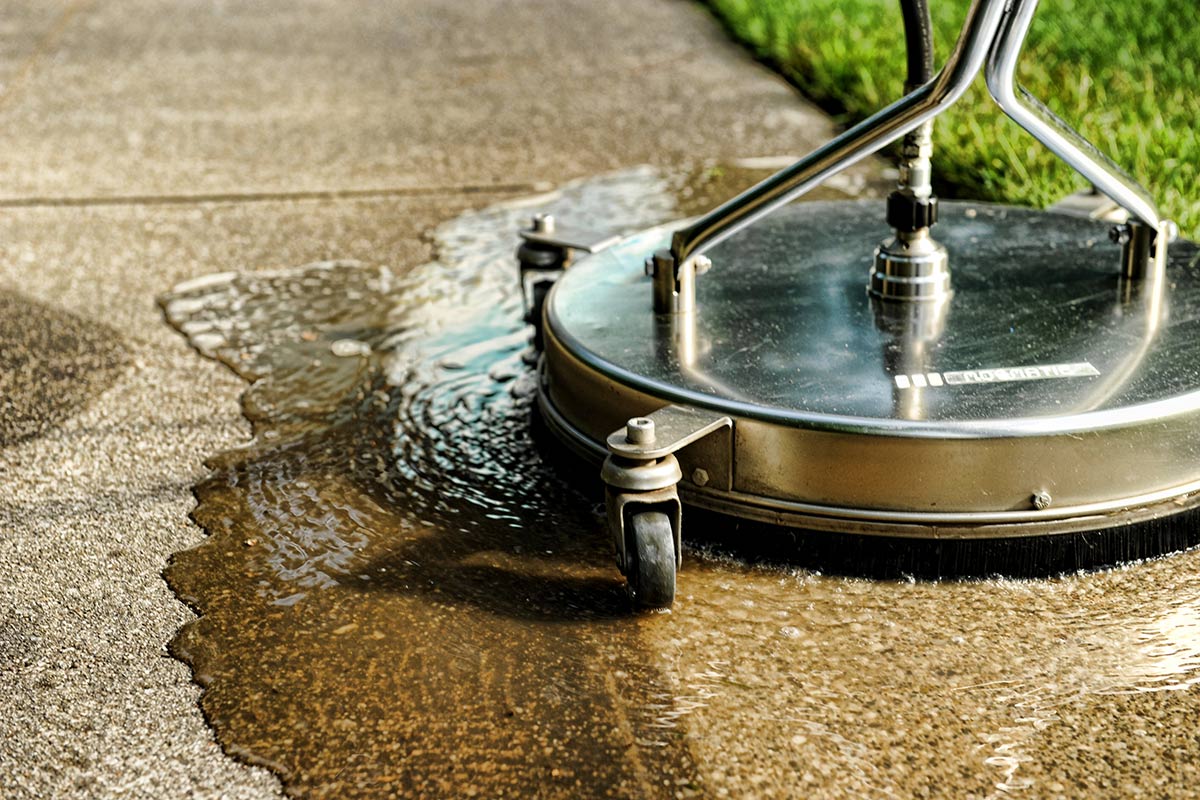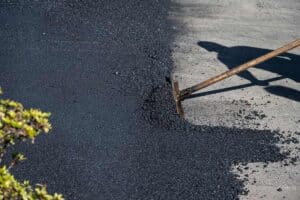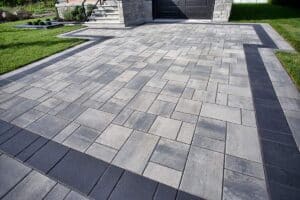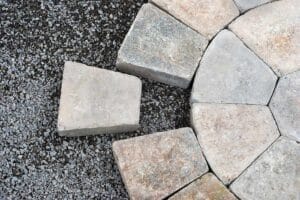
How to Clean a Concrete Driveway
To keep your new decorative concrete driveway looking good, it’s important to clean and maintain it regularly. Stains from hot tire marks, oil leaks, mold and mildew, and chemicals like lawn fertilizer and deicing salts will inevitably happen. However, you don’t have to let these blemishes ruin your curb appeal. By using the right cleaning methods and materials, you can remove them and preserve your driveway’s appearance for years to come. So, here are some tips for cleaning your concrete driveway and protecting and maintaining it.
How to clean a concrete driveway with a hose or pressure washer
To clean the everyday dirt and grime from a concrete driveway, you will need the following items: a garden hose equipped with a spray nozzle, a concrete driveway cleaner, and a stiff broom to scrub the driveway.
Using a pressure washer can be more effective to remove tough dirt and stains, but it’s important to have proper knowledge. Power washers eject water at a pressure of 1500 to 3300 psi, which is over 50 times stronger than a regular garden hose with a sprayer. Care should be taken to avoid using a setting that is too high or a distance that is too close as it can harm the concrete surface.
Tip: Renting a pressure washer might be more cost-effective than purchasing one if you only need to use it occasionally. This also spares you the trouble of storing and maintaining it. If you lack experience with pressure washers, it may be wise to employ a skilled cleaner who can clean concrete driveways with precision and without causing damage.
What is the best cleaner for a concrete driveway?
To clean your driveway effectively, consider using a specialized product. You can find concrete driveway cleaners that are suitable for general cleaning at your local home improvement store or online. However, if you’re dealing with a specific type of stain, you will need to use a different kind of cleaner.
- To clean oil, grease, grime, and dirt from concrete, employ a concrete degreaser
- To remove efflorescence, salt deposits, lime, or rust stains, utilize a cleaner formulated with non-corrosive or biodegradable acid
- cleaner formulated with non-corrosive or biodegradable acid. If you have paint, sealers, epoxy, or other topical contaminants, you should use a coatings remover or stripper
It’s possible that you already have a cleaner at home that can be used to clean your driveway. However, if your driveway has a decorative finish or color, be cautious as these cleaners may not be suitable. It’s important to conduct research and try a small, inconspicuous area before cleaning the entire driveway. Here are a few examples of household cleaners that are commonly used to clean concrete driveways:
- A mixture of bleach and water
- Vinegar that has been diluted
- Liquid dish detergent
- Baking soda
- Cat litter
How to clean oil and grease stains from a concrete driveway
To remove small oil spills or spots, you can use a strong detergent and a scrub brush. However, using a concrete cleaner or degreaser, which is a concentrated alkaline soap, can be more effective. This will help loosen up the oil, making it easier to remove. If the spill is fresh, first cover the stain with cat litter, sawdust, baking soda, or another absorbent material before cleaning.
How to clean mold and mildew from a concrete driveway
If your driveway is located in an area with a lot of shade, you may experience problems with mold and mildew growth, especially when it’s damp and humid outside. To solve this issue, you can clean the area with a mold-killing detergent or a bleach and water solution (mixing 1 cup of bleach with 1 gallon of water). If you’re concerned about harming nearby plants, you can use distilled white vinegar instead, which is also effective.
How to remove tire marks from a driveway
If you park a car with hot tires on a concrete driveway sealed with certain sealers, the plasticizers from the tire may cause discoloration on the sealer. To remove the marks, use a stiff brush and a concrete degreaser to clean the surface. If the discoloration has seeped into the sealer, you may have to apply a solvent or use a chemical stripper to completely remove the sealer.
General concrete driveway maintenance tips
- Reapply sealer as needed. To restore your driveway's original appearance and reduce its susceptibility to stains, it's recommended you reseal it every few years. After cleaning the concrete, ensure it dries for at least 2 to 3 days before resealing to prevent moisture from being trapped in
- Act fast. Removing leaves, oil spills, grease spills, and other contaminants from your concrete driveway as early as possible makes it easier to get rid of any resulting stains. If the concrete has not been sealed, it can absorb stains easily because it is porous. This can make removing the stains more difficult
- Avoid using deicing chemicals. During winter, avoid using deicers on your concrete driveway as they can damage the surface in various ways such as scaling and spalling. This is because they cause moisture to thaw and refreeze repeatedly. Additionally, if you apply deicers or if they drip off from parked cars, the sealer on your driveway may become ineffective in certain areas. Instead, it is better to use sand for traction purposes
- Re-sand the joints in concrete paver driveways. To maintain and clean a concrete paver driveway, you would follow the same steps as a poured concrete driveway. However, it is important to refill the sand between the pavers if it gets washed away. For this task, you will need to use a polymer sand that contains a special polymeric additive. This sand helps to bind and harden the sand in the joints and prevent erosion



